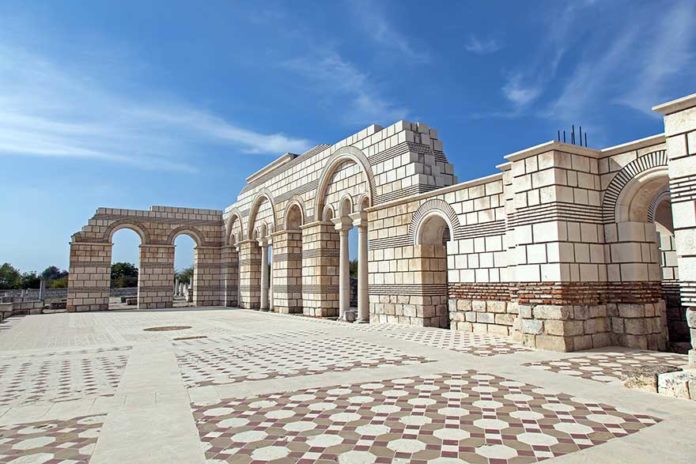The remains of the first Bulgarian capital, Pliska, are situated about 29 km from Shumen and just 2 km from the modern town of Pliska. Pliska was the capital of the First Bulgarian Empire from 681 to 893 AD. The National Historical and Archaeological Reserve Pliska was declared an archaeological monument of national importance in 1970. The location of the capital was not chosen randomly; it was built on a plain surrounded by the slopes of the neighboring plateaus. The Proto-Bulgarians chose this place due to the favorable conditions for cattle breeding. Additionally, Pliska was at the crossroads of important routes in the region.
The Great Basilica in Pliska is a remarkable example of early European Christianity and an important monument of Bulgarian history. Built around 875, it was one of the largest Christian temples on the continent until the 17th century. After Bulgaria’s conversion to Christianity, it is considered Bulgaria’s most impressive Christian building. For 250 years, it served as a cathedral, a princely, episcopal, and monastery church, and it was the center of spiritual and religious life in early medieval Bulgaria.
The Great Basilica is built on a cruciform mausoleum, and its original function has been the subject of much debate among scholars. According to one hypothesis, the building was the martyrium of St. Boyan Enravota, the first Bulgarian martyr executed for treason by his brother Khan Malamir around 832. The Great Basilica’s altar is located in the same place as the martyrium, suggesting that the building was constructed on its site. Another theory proposes that the Great Basilica was initially built as a mausoleum for Bulgarian Khans before being converted into a cathedral after the country’s conversion to Christianity.
Aerial view of the Great Basilica in Pliska
The Great Basilica was an impressive structure, measuring 99 meters long and 29.5 meters wide, and was formed of two almost equal parts: a vast atrium and a true church. It had a simple undivided vestibule and a single apse with a deep pre-apse space on the altar. Unique rooms necessary for church service were set aside at the eastern end of the side aisles. The basilica was directly connected to the palace center, and a straight road paved with huge irregular stone blocks connected the east gate of the Inner City to the western entrance of the basilica.
The Great Basilica was surrounded and protected by a 4-meter-high stone wall with crenellations. The church’s main entrance on the western facet of the atrium was grandly designed, and a massive, almost square, tower-like structure was located in front of the western facade, as evidenced by its thick foundations. There was no well or stone chalice in the courtyard before the basilica, unlike traditional basilica atriums of the early Christian era. Instead, there was a well in the southern aisle of the church itself, left over from the previously existing pagan temple.
The Great Basilica was directly connected to the palace center by a straight road paved with huge irregular stone blocks. The road was used by representatives of the khan-princely court and the ruler himself to go to and return from the Great Basilica.
The archbishop’s residence is in the courtyards to the north and south of the temple, with a residential palace discovered in the northern courtyard and a bath with a hypocaust to the west. To the south of the basilica, a three-part building was discovered, housing a didaskaleion (school) and a scriptorium. The didascalion provides evidence that law, architecture, and construction were studied in addition to liturgical books in the complex. The pupils of Cyril and Methodius, who were accepted in 886 by Tsar Boris I, probably worked here and laid the foundation for the “Pliska-Preslav literary school” in the Old Bulgarian language.
The Great Basilica also encompasses several necropolises, including a necropolis with graves of members of the monastic brotherhood in the courtyard to the southwest of the basilica and a secular necropolis with graves of aristocrats in front of the aspides of the basilica. The courtyard to the north of the residence is enclosed within the monastery premises, with the central area occupied by the kitchen and dining room. A two-story building with ten identical rooms-cells, where the monks resided, was discovered in the eastern wing of the courtyard. The large monastery well is in the middle of the courtyard, while the second bath, with a hypocaust and cross-domed structure, is adjacent.
More information about the Great Basilica of Plaiska can be discovered through the National Historical and Archaeological Reserve Pliska website.



